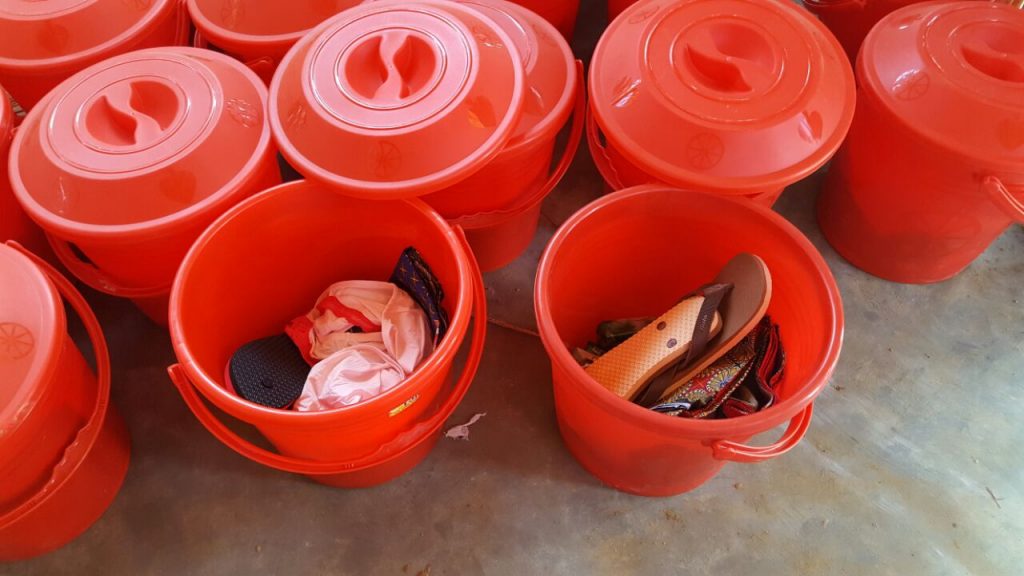Over 9,000 “dignity kits” distributed. What even are they and why are they important?
Reading Time: 2 minutes
A woman’s handbag seemingly contains a world of mystery. Her phone, keys, wallet, some tissue to wipe the nose, a sanitary pad just in case, maybe sunglasses, and receipts from the supermarket. But what does one carry in a crisis?
In a reasonably secure environment, all these items represent an average woman’s everyday life. A woman’s-a human’s-right to a life with basic dignity innately implies having at their arm’s length everything she could possibly need.
Imagine having to flee your home because of a violent conflict or natural disaster. What you would carry at that moment would be vastly different, and perhaps impossible to fit into one single handbag.
In the midst of a life-threatening crisis, items like a soap, comb, or underwear may appear as luxuries. When around 40,000 women are stripped off access to their possessions- items that honour her right to live a regular life- their dignity needs special care and protection.
Over 650,000 forcibly-displaced Rohingyas crossed the border to Bangladesh following late August 2017. Settlements overcrowded, terrains muddied in the monsoon rain, and fresh stories of horror and death poured in with every new arrival.
As humanitarian actors began to respond to this critical situation, they focused on the most immediate needs—emergency shelters, food, and relief. BRAC responded during the initial emergency by providing shelter materials, food, health services, among other critical provisions.
Dignity kits for women were among those critical items. Over 9,000 of these kits have been distributed. They contain 10 household items- general and female hygiene items, laundry items, basic kitchen utensils, including bowls, spoons and glasses, and a solar lamp.
Why are these relief kits called dignity kits?
These kits represent the bare essentials that an average woman needs—items she could not have carried with her when she fled her home. BRAC’s dignity kits focus on safeguarding her basic necessities- to cook, to maintain proper hygiene, and to safely move in the dark.

Dignity kits contain general and female hygiene items, laundry items, basic kitchen utensils, including bowls, spoons and glasses, and a solar lamp
Whilst basic hygiene kits are often distributed at the onset of emergencies, dignity kits serve a broader purpose and contain a wider range of items. The items are explicitly tailored towards the needs of women and girls of reproductive age, who are most often the primary caregivers for their families in their new shelters.
Having the ability to care for their particular hygiene needs is a step closer to preserving it. BRAC’s hygiene workers facilitate counselling sessions to Rohingya women in their settlements to ensure better hygiene practices. Outreach workers and volunteers explain the safe uses of sanitary napkins, since many have never used them before.
As the primary caregivers, women are often the last to look after themselves. This is a behaviour that needs to change across the spectrum, and an issue that needs to take precedence in a crisis setting.
Preserving dignity is essential to maintaining self-esteem and confidence, which is important to cope in stressful and potentially overwhelming humanitarian situations. This requires supporting women’s wellbeing and assisting them in providing care and protection to their children. We cannot abandon those most vulnerable and their need for basic necessities. It is humanity that we root for, and with dignity, always.
Dibarah Mahboob is a manager of communications and partnerships of BRAC’s humanitarian crisis management project.





